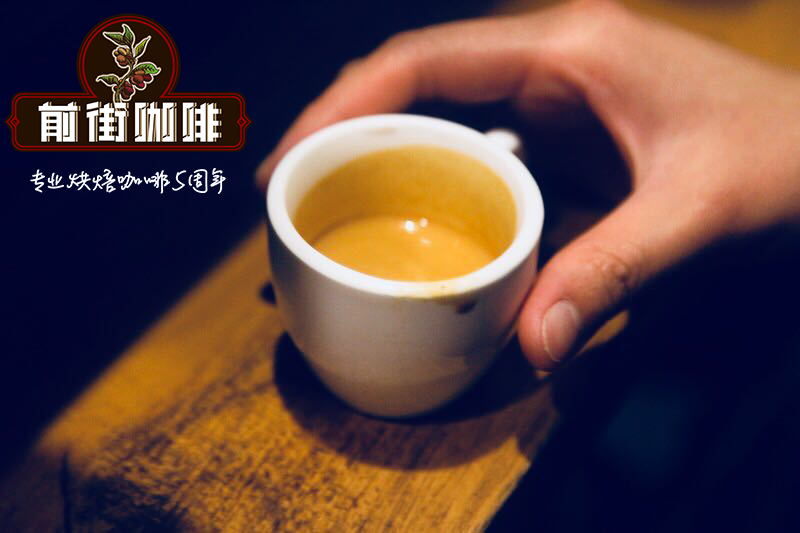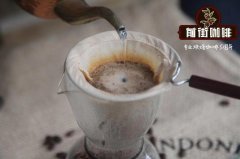Supercritical treatment of carbon dioxide-- the most expensive treatment of low-caffeine coffee

Professional coffee knowledge exchange more coffee bean information please follow the coffee workshop (Wechat official account cafe_style)
Coffee is very rich in substances, but the greatest impact on the human body is always caffeine. Coffee with a small amount of caffeine is called decaf (Decaf Coffee). How much does the word "small amount" mean? Let's simply look at a few sets of data and make it clear.
The content of caffeine in Arabica coffee is 1.2% to 1.6%, while the content of caffeine in robusta caffeine is about 2.8%, about twice that of the former. If the caffeine content in the coffee drink does not exceed 0.3%, then the cup of coffee can be named "decaf" by the ICO. The FDA of the United States holds that the standard of "decaf coffee" is that 97% of the caffeine in the original coffee must be extracted from the coffee beans, and there is no strict limit on the exact amount of caffeine in the raw beans of the original coffee.
A cup of regular coffee with about 350 milliliters contains 100 to 180 milligrams of caffeine, while the same cup of decaffeinated coffee usually contains less than 5 milligrams. Caffeine content has plummeted to this point, but it does not mean that it does not contain caffeine, nor does it mean that it has completely lost its exciting and refreshing effect.
There is less natural decaffeinated coffee, and most of the decaffeinated coffee we drink at this stage is the product of artificial decaffeination. There are various decontamination techniques for raw beans, but they all promote the expansion of the bean body (such as with the help of water or steam), extract caffeine by osmotic technology, and then restore the water content of raw beans to between 8% and 12.5%. This de-causal treatment, not to mention the loss of flavor, is bound to affect the structure of raw bean cells, accelerate aging, and shorten the effective shelf life.
Supercritical carbon dioxide treatment (CO? Process): carbon dioxide supercritical treatment is to soak raw coffee beans in liquid carbon dioxide. Under high pressure, carbon dioxide is in a semi-gaseous and semi-liquid state. In this state, carbon dioxide can actively combine with caffeine, and caffeine is finally removed by an exhaust activated carbon filter.
Either way, the extracted caffeine is resold to cola or pharmaceutical companies for reuse, and caffeine is not wasted at all. As for the flavor of decaf coffee, Viagra can only be said to be unflattering here. You can't have both fish and bear's paw. Since you need decaf coffee more, you can only give up the flavor.
The method of supercritical CO2 extraction of caffeine is to make coffee beans absorb water, expand to twice the size, loose caffeine molecules in the bean body, add carbon dioxide and give more than 100 atmospheric pressure (Atm) in the water, so that water and carbon dioxide are mixed to create a soda environment. Carbon dioxide attracts caffeine molecules like a magnet, and when caffeine is captured by carbon dioxide, caffeine begins to move. Carbon dioxide is highly selective and does not capture carbohydrates and proteins in coffee beans, because carbohydrates and proteins are the main components of flavor and smell in coffee beans. When it dries naturally after the extraction, caffeinated water can be easily separated from caffeine and used for other commercial purposes.
END
Important Notice :
前街咖啡 FrontStreet Coffee has moved to new addredd:
FrontStreet Coffee Address: 315,Donghua East Road,GuangZhou
Tel:020 38364473
- Prev

Introduction to Bass Coffee treatment-- characteristics of low-caffeine Coffee treatment in Switzerland
Professional coffee knowledge exchange more coffee bean information please follow the coffee workshop (Wechat official account cafe_style) caffeine removal methods caffeine removal technology originated in Germany, has a history of more than 100 years. Up to now, there are three main caffeine removal methods: Swiss water method, solution method and super carbon dioxide method. And either way, caffeine removal
- Next

What is the difference between espresso and coffee? what does espresso mean?
Professional coffee knowledge exchange more coffee bean information Please follow the coffee workshop (Wechat official account cafe_style) Coffee beans, coffee machines and cafes have become the three primary colors in coffee culture. Therefore, as a link in the whole coffee culture chain, Italy's most outstanding contribution is tantamount to the invention and improvement of the espresso machine. The more recognized steam pressure cooking
Related
- Beginners will see the "Coffee pull flower" guide!
- What is the difference between ice blog purified milk and ordinary milk coffee?
- Why is the Philippines the largest producer of crops in Liberia?
- For coffee extraction, should the fine powder be retained?
- How does extracted espresso fill pressed powder? How much strength does it take to press the powder?
- How to make jasmine cold extract coffee? Is the jasmine + latte good?
- Will this little toy really make the coffee taste better? How does Lily Drip affect coffee extraction?
- Will the action of slapping the filter cup also affect coffee extraction?
- What's the difference between powder-to-water ratio and powder-to-liquid ratio?
- What is the Ethiopian local species? What does it have to do with Heirloom native species?

